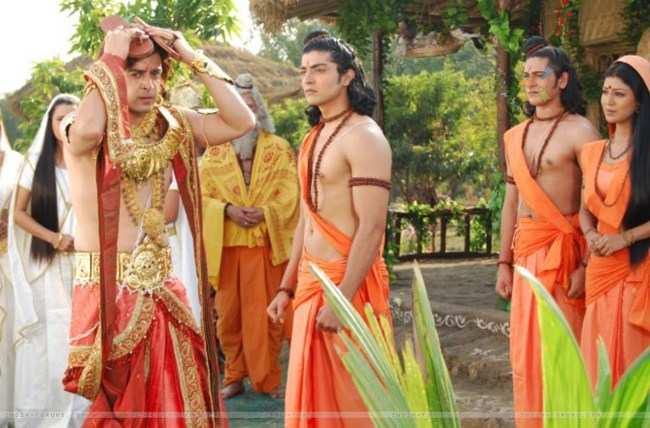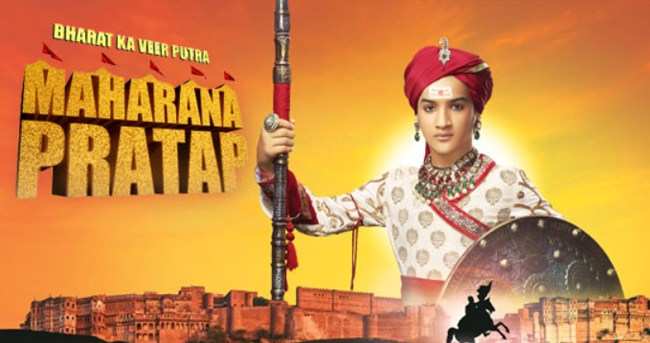Elements of Historicity in the Period Dramas on Indian Television
Mythology and period dramas are oft-represented themes in the electronic media, especially television and cinema. Right from the early 1980s, when the television industry was in nascent stage, mythological serials such as the Ramayana and Mahabharata were prime time telecasts on Doordarshan
By Sushmita Banerjee

Mythology and period dramas are oft-represented themes in the electronic media, especially television and cinema. Right from the early 1980s, when the television industry was in nascent stage, mythological serials such as the Ramayana and Mahabharata were prime time telecasts on Doordarshan and with the coming of the satellite television many serials dealing with similar themes have been produced and aired on several channels. At present, at least three mythological serials and two period dramas are being aired, but do these serials represent history accurately?
Currently, the serials dealing with historical themes are very interesting as they are near contemporary (16th century), have several common characters (Akbar, Maham Anga, Bairam Khan) but have different protagonists; essentially, I am referring to Dharti ka Veer Putra Maharana Pratap and Jodha Akbar. While one serial deals with the life history of a young Rajput prince aged 14 years, his accomplishments as a warrior; the other serial shows the romantic and political life of Mughal emperor Akbar during his early years as a King. Both intend to glorify the characters of Akbar and Rana Pratap, albeit in different ways.
The Maharana Pratap revolves around the life of the protagonist, Rana Pratap, an ideal son of soil who fought for protection of motherland against the barbarous Mughals! He is the heir-apparent of the Mewar province, an accomplished warrior and ideal son who follows his father’s orders diligently, loves his homeland (Mewar) and fights and defeats several enemies, including the war veteran Mughal general, Bairam Khan.
The serial portrays the Mughals in a negative manner, especially Akbar and Bairam Khan, and instead of showing the superior military prowess of Bairam Khan, it shows him as a small time warrior who is always in pursuit of Rana Pratap and gets defeated. Akbar is portrayed as a young, whimsical, violent ruler who disregards authority, disrespects elders and has no other task but to pursue and kill Pratap and marry a Rajput princess in order to win over the Rajputana. Hence, the animosity between Pratap and Akbar in the late 16th century primarily on account of non-acceptance of mansabdari by Pratap is anachronistically traced to their childhood. On the other hand, Pratap is portrayed as a prince who had immense popularity amongst people on account of his love for subjects, ability to deliver justice by providing support to the poor and weak and his abilities as a military strategist.

In contrast, the Jodha Akbar portrays Akbar as a sensitive ruler who marries a Rajput princess, Jodha, due to certain political contingencies but allows her to pursue her religious beliefs and customs. Though the serial portrays several Rajput characters, Rana Pratap is attributed a marginal importance compared to the other Rajput rajas. Akbar is portrayed as an able ruler who is sensitive to the needs of his subjects, abolishes slavery and pilgrim tax and delivers justice after examining a problem in all its complexities and consulting his able and experienced courtiers—Atka Khan and Maham Anga. This serial is not free from rhetoric as Maham Anga, the wet nurse of Akbar, her son Adham Khan and Akbar’s brother-in-law, Sharif al-Din are often shown to be plotting conspiracies in order to create differences between Jodha and Akbar, to kill Akbar and induce jealously between Akbar’s other wives especially Ruqaiyya Begum and Jodha. In addition, there are mythical characters such as Benazir, a charming vishkanya (a woman who can digest poison and then kill people through her poison) who is planted by an enemy in Akbar’s harem but Akbar uses her to test Jodha’s love and how she risks her life in order to safeguard Akbar from Benazir’s poison. Akbar appreciates her loyalty and develops a soft corner for her. Essentially it is a romantic story about Akbar and Jodha in a political backdrop.
Both the serials use rhetoric immensely to justify the plot and bring to life certain characters that do not have any historical relevance. Maharana Pratap turns Akbar into a villain, portrays a larger than life character of Rana Pratap who defeats all his enemies at a tender age at ease, depicts Bairam Khan as a lesser warrior who gets severely penalized by Akbar on account of inability to defeat Pratap completely ignoring his other military accomplishments, and even depicts an anachronistic meeting between Akbar and Pratap whereby on account of ignorance of each other’s true identity they become friends and on knowing the actual identity, Akbar pledges to kill Pratap. Similarly, Jodha Akbar portrays Maham Anga as a scheming mother-in-law (though historically her role was rather limited) who wants to throw the Hindu princess Jodha out of the Mughal household and uses several strategies to create tensions in the palace, Sharif al-Din, Akbar’s brother-in-law falls in love with Jodha and intends to kill Akbar, the mysterious and completely unhistorical Benazir who tries to kill Akbar and Akbar’s preoccupation with Harem politics with least importance to his military accomplishments.
Both the serials have lavish sets, beautiful backdrops, show glamour, emotions, action-packed dramas and hence makers of the serial intend to connect the historical characters with the audience by portraying the unfolding of their lives as a day-to-day affair. Visual projection of history can be quite useful to engage children with historical characters and understand the quotidian and lavish life styles of commoners and emperors. Many people find it difficult to understand the relevance of history and its people but a power-packed drama on television manages to capture the attention of the audience. However, the makers of the serial should avoid reporting rhetoric as facts, turning certain characters into villains in order to glorify another character, misrepresenting regional independence as protection of interests of the motherland, transposing strategic tensions into personal enmities, introducing unhistorical and imaginary characters which are not warranted by history as television viewers may find it difficult to sift fact from fiction. History needs to be portrayed sensitively in order to represent the multiple visions of past and multi-layered portrayal of characters that does not seek to glorify or belittle individuals.
The author is a doctoral candidate in history at Delhi University.
To join us on Facebook Click Here and Subscribe to UdaipurTimes Broadcast channels on GoogleNews | Telegram | Signal


